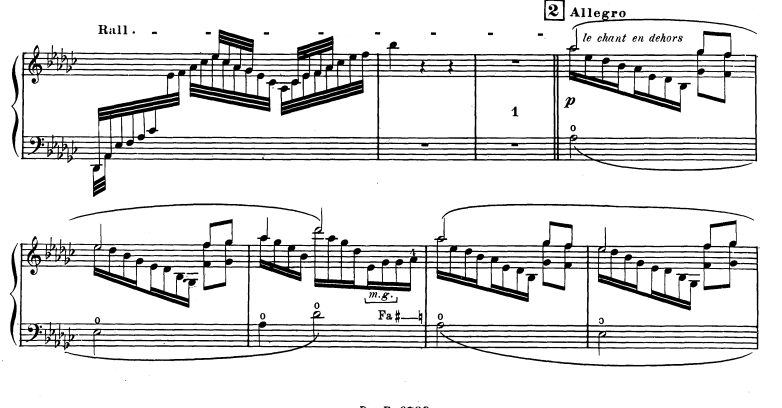Readability assists with playability
Before, we talk about the harp specifically, let’s rewind and think about how this is traditionally done on the piano.
Hand division on the piano
On the piano, generally speaking, notes are divided by hand. The right hand tends to play higher notes, the left hand tends to play lower notes. Hand crossing is pretty awkward, and not a common (regular) practice – you’ll see it maybe 5-10% of the time. Additionally, it’s extraordinarily awkward for hands to play in the exact same registers.
Hence, on the piano, it works quite well to divide notes by hand:
Upper staff = treble clef = right hand
Lower staff = bass clef = left hand

Hand division on the harp
On the harp, the hands tend interact in the same registers far more frequently.
Part of this is due to the difference between harp and piano technique. It’s often more effective for the hands to “help each other” in the same register than to have a busy part in a single hand.
Part of it is due to the hands playing on opposite sides of the harp. The interaction is far less awkward on the harp.
Hence, on the harp, we have to deal with the complications of overlapping notes in similar registers.
The common solution is to use clef changes and keep right hand = top and left hand = lower.

Holliger Sequenza for Harp
But is this actually the best solution?

To maximize flow and readability, I highly recommend generally dividing notes by register, rather than by hand.
In most cases, you may not need to indicate which hand plays which notes. You can simply be aware that a busy part may require 2 hands to alternate. (Harpists are good at finding solutions and the solutions can vary from harpist to harpist.)
Simply consolidating the notes into a single staff (if in the same register) provides maximum readability AND flexibility for the harpist.
However, the solution is obvious or you otherwise want to indicate the hands, you can use a doubled beam, like this:

Ultimately, look for the solution that creates the greatest ease of reading.
And feel free to check with a harpist!
Want to learn more?
Join the Harp Notation group on Facebook for more discussions about how to write effectively for the harp!
